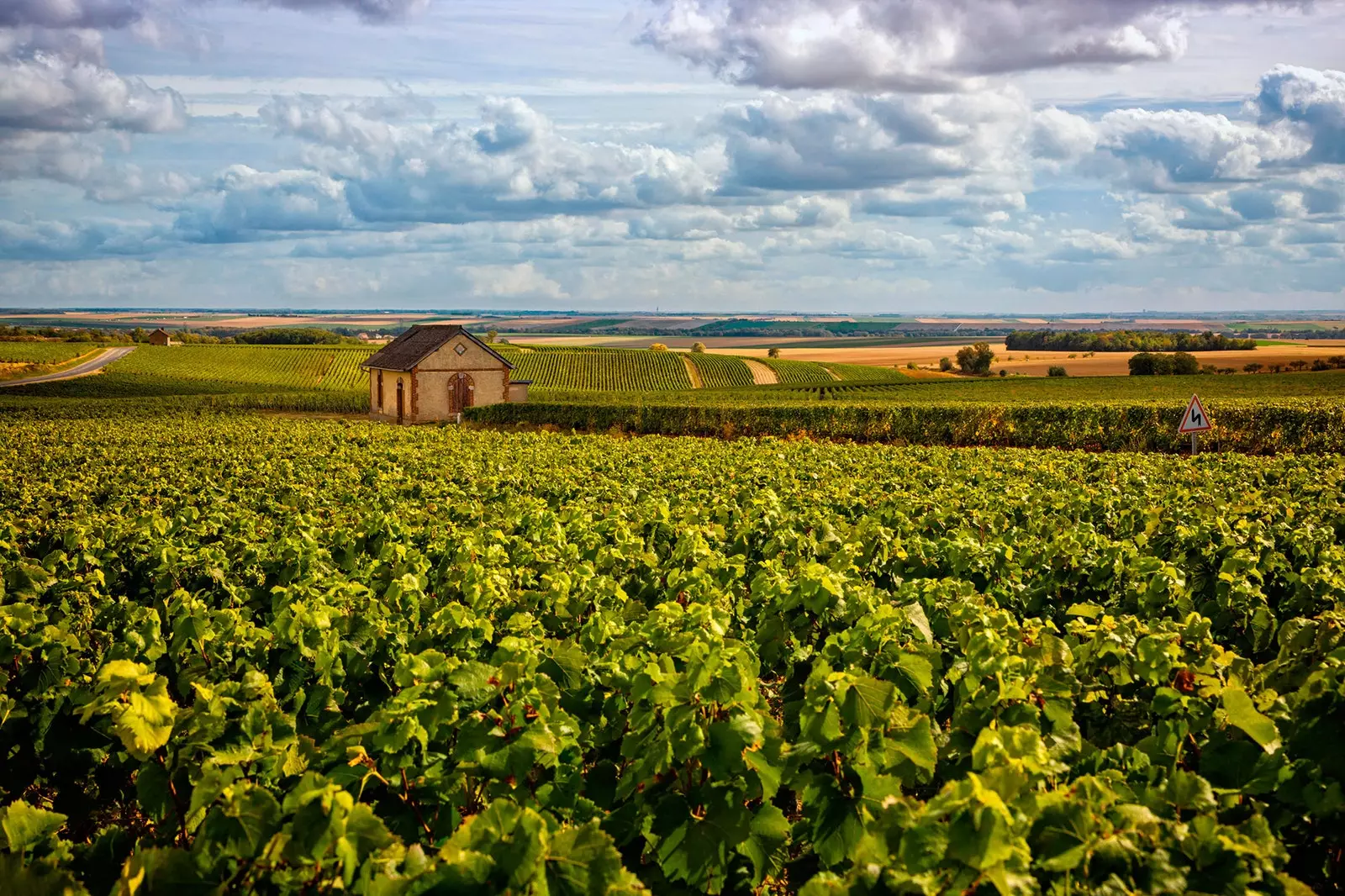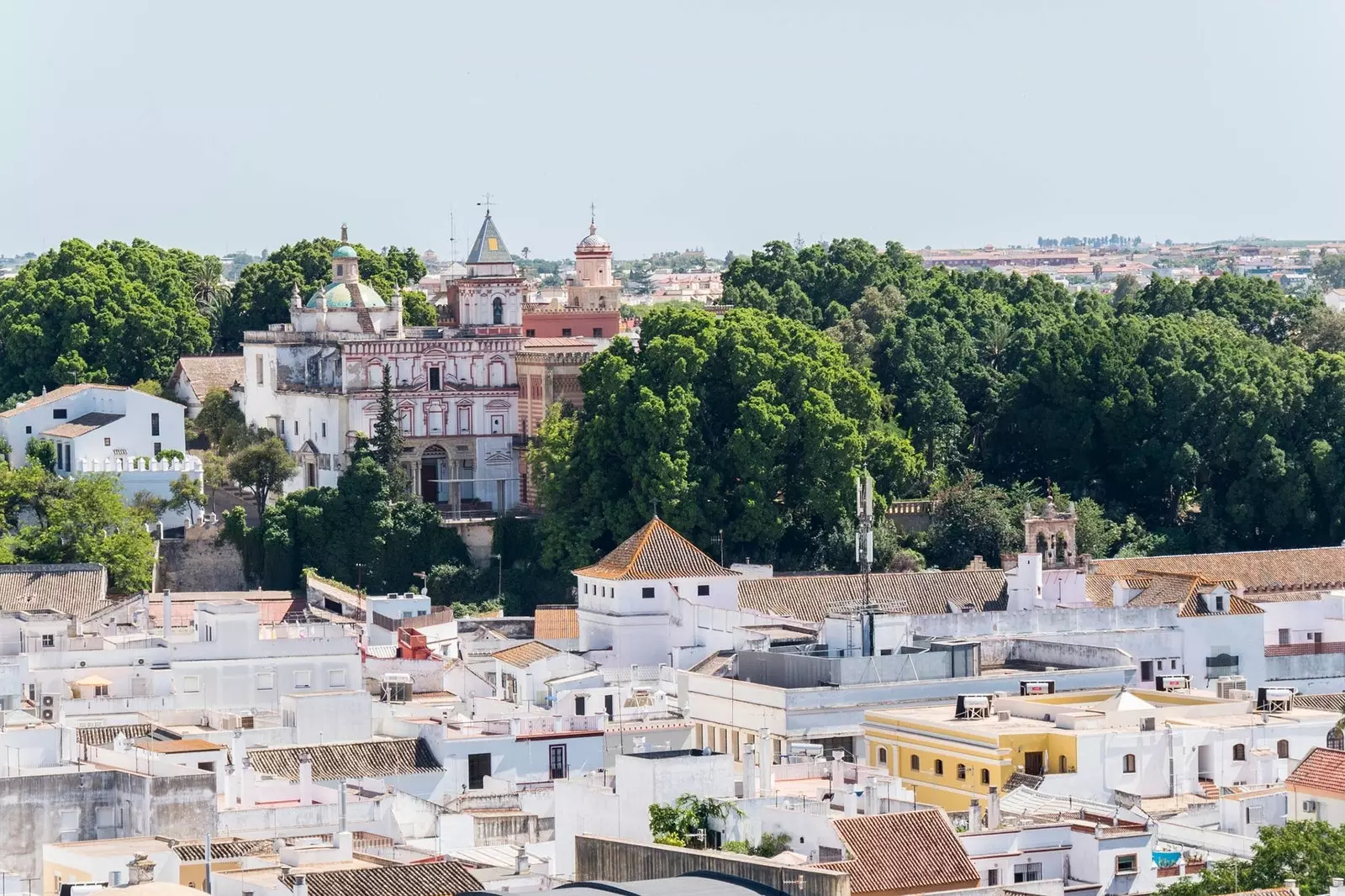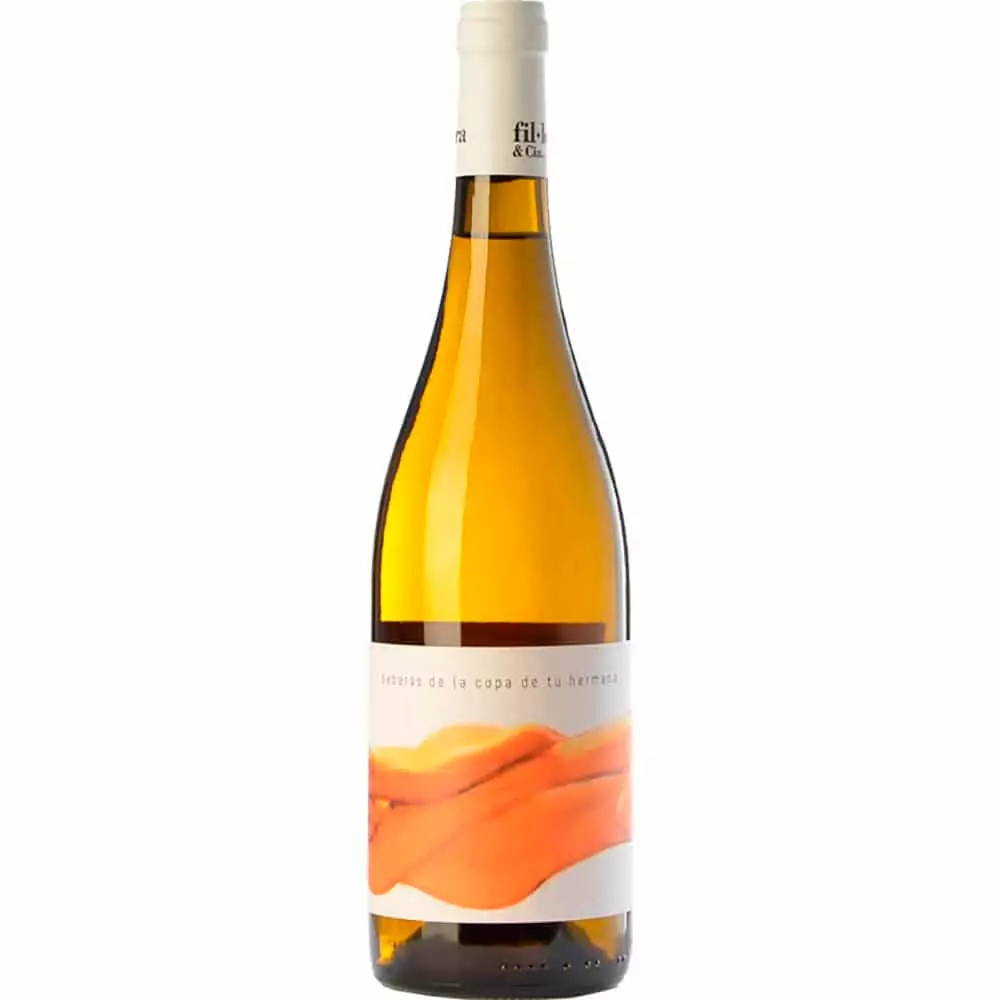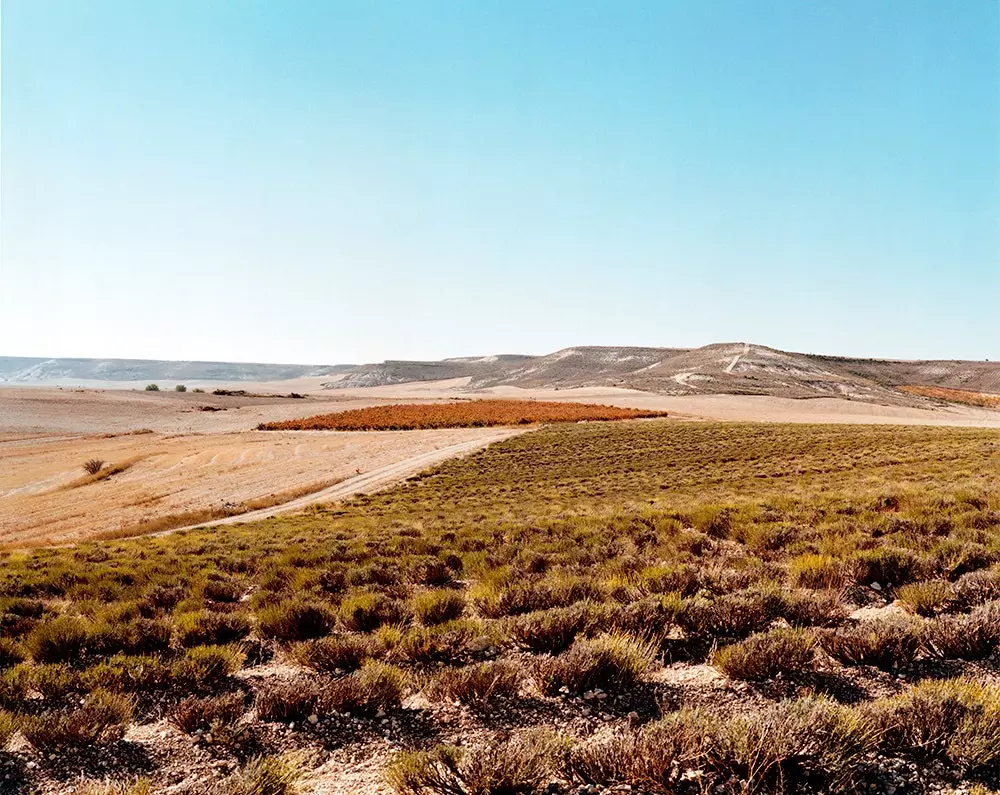
We started a particular wine road trip through towns where cool wines are made
MARISMILLA - SANLUCAR DE BARRAMEDA (CADIZ)
For me, it's the wine with the most beautiful name in the world Don't you think? But in addition, this tintilla rosé from Jerez's Pago de Balbaína has an emotional link with neighboring Sanlúcar de Barrameda and, above all, with the Guadalquivir.
Bill willy perez, who is behind the elaboration of it, that his father, Luis Pérez, comes from a family of fishermen from Sanlúcar and part of Willy's life has been linked to the sea, but above all, to the Guadalquivir, "the river of my life", because as a child, he remembers, he loved to cross from Sanlúcar to the Coto de Doñana crossing the river.
Marismilla is also, although in the plural, the name of a palace that is located in the Coto, which has been and is a summer residence for government presidents, which is also said to have been the place where Goya painted his 'majas'.

Sanlúcar de Barrameda, pure essence of Cadiz
Marismilla has, therefore, a lot of Sanluqueño wine despite the fact that the vineyard from which it comes, The Calderín del Obispo, is in Jerez, in the Pago de Balbaína, precisely the Jerez payment closest to the sea.
It seemed, in a territory where the queen is the palomino, the raw material for sherry's finos, olorosos or amontillados, that making a rosé of tintilla was a real madness, But here it is: the acidity of the tintilla was one of the reasons why Pérez dared with an unusual wine to which, since the 2019 harvest, he is also adding part of White grape (palomino, vijiriega…).
Here, then, a rosé from Jerez with a soul from Sanlúcar, inspired by the Guadalquivir river and whose vineyard is located in a plot closely related to the sea, because Balbaína means "land of the Balbos", merchants and owners of the port of Cádiz, that they were able to acquire these lands due to their proximity to the sea.
Here it is said, says Willy, that Columella was born, a famous agronomic writer of Antiquity (S I AD); His uncle, Marco Columela, had vineyards in the Pago de Balbaína and already spoke in his writings of the difference of soils on the ground.
A walk through the payment not only allows you to get closer to the origin of Marismilla, but also to enjoy yourself stepping on historical territories of sherry and, in addition, hallucinate with the views of the Marco vineyard. Surely now opening a Marismilla has another meaning for you. You're already late.
YOU WILL DRINK FROM YOUR SISTER'S CUP - FONTANARS DELS ALFORINS (VALENCIA)
We're going on a trip to Valley of the Alforins, a place that some rancietes call "the Valencian Tuscany", but that it could perfectly give a name to the Italian region and that it be called, why not? the Italian Vall dels Alforins… we are very important, us.
Absurd toponyms aside, coming to this region populated by vineyards, fruit trees and sandbanks full of pine trees It is a journey that can be made by uncorking this white that the trio makes Fil loxera and company , winegrowers and oenologists based in Fontanars dels Alforins, one of the towns you must visit if you like wine and are in the vicinity. Although, according to Pilar Esteve and José Ramón Doménech, co-owners of the winery, “until here you have to come”, it is not a place of passage.
And going, you find a street called "August 5, 1927". Yes, as it sounds, because it was on this date that Fontanars dels Alforins achieved something recently highly coveted in some areas of the country: the independence.

You will drink wine from your sister's glass, by the trio Fil loxera y Cía
Until that date, the now town It was a departure from Ontinyent, that it had all the services, and the inhabitants had to travel and waste a lot of time (they even spent the night there) to be able to do business. After Ontinyent denied the potters their independence, they got it by going to the central government. A triumph that belonged to its inhabitants, most of them peasants dedicated to agriculture. In fact, the name of Alforins comes from the Arabic al-huri, which designated cereal deposits. And from there, alforins, traditional name of the municipality.
Fontanars dels Alforins has been preserved, says Doménech, like 200 years ago, without being invaded by wild urbanism and in its surroundings, covered with vineyards and fruit trees, you can see the old mansions where the inhabitants of the town lived, dedicated to agricultural work for the lords of the buildings. Some can still be seen standing and those that have preserved winemaking activity look like Bordeaux châteaux.
Fil loxera & Cía are also farmers and in Fontanars they are in their element, recovering varieties that are now only found there, such as verdil, or making wines like this Beberás…, a wine that incorporates a part of Monastrell that makes it very unique, a white with an almost red identity, or vice versa. Such a wine Mediterranean, tasty but at the same time fresh, it can only come from a landscape like that of Fontanars, a plateau at a higher altitude than other towns in the Albaida valley and with a perfect climate for the grapes to ripen.
Another curiosity: in Fontanars, the mayor is a chef who got a Michelin star and gave it up three years later, Julio Biosca, owner of Casa Julio in the town and where Pilar Esteve and José Ramón Domenech recommend, of course, stopping to eat. And to drink, right? You will drink…
THE STALLS - ALCAZARÉN (VALLADOLID)
Here is a wine named after a place, well La Sillería is one of the Verdejo plots that make up this magnificent Valladolid white. Although Beatriz Herranz and Félix Crespo, viticulturists behind this wine, have their own cellar, bugle boat, in La Seca, where they make Verdejazos that you have to try to get rid of all the bad clichés and little winelover that can surround this grape, It was in Alcazarén where they fell in love with an atypical landscape.
Yes, because in this town of Tierra de Pinares pucelana they found what they call "very peculiar plots" and we, if we see it, we can call it vineyard beach, or beach vineyard, 'Cause that's what the sand they rest on looks like strains that are around 150 years old.
“Really old Verdejos, not 30 years old like those called old vines here,” Beatrice says.
A conscientious and loving work of these beach vineyards has achieved that La Sillería is one of the most atypical, singular and special Verdejos that hit the ground.
Herranz says of him that has energy, and it may be that or it may have to see what happens here the Camino de Santiago that departs from Madrid and joins the French in Sahagún (León), or that it was there where the Madrid bandit Luis Candelas will spend his last night, that of July 18, 1837, before being arrested and later sentenced to death by garrote, an episode that the people of Alcazar celebrate every year at the beginning of November, reliving the moment disguised in period dresses and blunderbusses and doing sideburn contests (yes, as you read). In the 60's it was still standing the Posada del Caño, where the criminal was arrested, although now the place is occupied by a house.
In addition to these charms, and that of La Sillería, Alcazarén, an Arabic name that referred to "two alcázares", has in its church of Santiago one of the most interesting Mudejar ensembles in the province of Valladolid. What, are you thirsty?
MATALLANA - SOTILLO DE LA RIBERA (BURGOS)
Matallana is a wine that claims the return to those forgotten places, to those lost vineyards that were abandoned in an unstoppable rural exodus. Since 98 Telmo Rodriguez and Pablo Eguzkiza They have sought the best territories of the Ribera del Duero and they realized that many of those sites had been abandoned: "The people here did not have the connection with the land that we have seen in other places, such as Toro or Rioja."

Riverside Landscapes
With their trips to the region, they saw that La Ribera had many differences according to the towns in terms of soil: gravel, limestone, sand, clay... They loved that, they saw it as a blank canvas on which to start drawing a new landscape.
As they did not find the vineyards they were looking for but they did find the sites, they decided to plant vines as had been done before: mixing varieties in glass (there is not only tempranillo, but also garnacha, valenciano, albillo and others), cultivated by hand and without herbicides or pesticides... and Matallana, from this vintage, 2014, is the most elegant result of two decades of work claiming the value of the towns and their landscapes: a combination of 11 different vineyards (which with a little visual acuity you can identify on the wine label) from five towns of the Ribera, from north to south: Sotillo de la Ribera, Roa, Fuentecén, Fuentemolinos and Pardilla.
Sotillo, whose El Bosque and La Guiruela plots are part of Matallana, It is the northernmost town of those five, and also the place where the Telmo Rodríguez Wine Company has bought a house to put down roots in the Ribera: “Sotillo is the most beautiful town in the Ribera, it is the gateway to this area, the only town in Burgos with the surname 'Ribera' and, furthermore, It has a beautiful neighborhood full of underground cellars.”
That's how it is, Sotillo is a place to let yourself go for a slow walk and enjoy Castilian sobriety; a town that depended on Gumiel de Mercado in the 15th century and that was a transit area and royal road between Burgos and Madrid, a circumstance that is attested to by its 18th-century fountain and trough, built to quench the thirst of travelers.
In addition, a walk through its streets to the neighborhood of the wineries discovers buildings from the 17th and 18th centuries such as the Palacio de los Serrano, which today is a rural accommodation, or the birthplace of the local painter Fermín Aguayo, pioneer of abstract painting in Spain.
Sometimes the towns are drunk.
